We’re documenting our grow of B-Funk Feminized, a 65% sativa-dominant hybrid that perfectly blends the explosive, stretched-out growth of sativas with just enough indica genetics to fit into most indoor spaces. Overall, this plant was a breeze and a true joy to grow. If you’re an indoor grower tired of bushy indicas, B-Funk Feminized is worth a look.
Total growing time: 90 days
Flowering time: 62 days
Final height: 113 cm
Final yield: 137 grams
THC content: 23.2%
Since we designed this strain alongside the team at Death Row Records, it was important that our B-Funk Feminized be given the best possible conditions. To that end, we grew it beneath a 1000 W Phillips GreenPower lamp hung three metres off the ground and set to an 18/6 schedule during vegetation. During the “day”, we kept the temperature at a stable 23°C while letting it drop to 21°C at “night”. The room was kept at a relative humidity of 65% and our plant was grown in an 8-litre plastic pot filled with BAC Lava Mix.
Germination & seedling
As with every grow, the first order of business was to germinate our seed. To do this, we chose to use the trusty Paper Towel Method, as it’s easily the fastest, simplest, and most reliable means of germinating a seed, and you only need a plate, some paper towels, and a plastic bag.
Just fold up a few paper towels, add 20-30 ml of water so that they’re damp but not dripping, and set them on a plate. Next, sprinkle your seeds over the towels and cover them with another damp paper towel. Lastly, place the plate and seeds into an open plastic bag, and put that somewhere warm but out of direct sunlight. After 24-36 hours, you should notice the seeds splitting open to reveal a small white taproot, signalling that it’s time to plant.
At this point, we put our seed (taproot down) into a pre-soaked Rockwool cube and set that in a tray under a 600 W LED lamp. This early, too much light, heat, or water can cause permanent damage and could even stop a seed from sprouting. We left it to do its own thing for three days until it was time for our seedling’s first feeding with 100 ml of pH-balanced water (pH 6.2; EC 0.8) mixed with a small dose of rooting hormone.
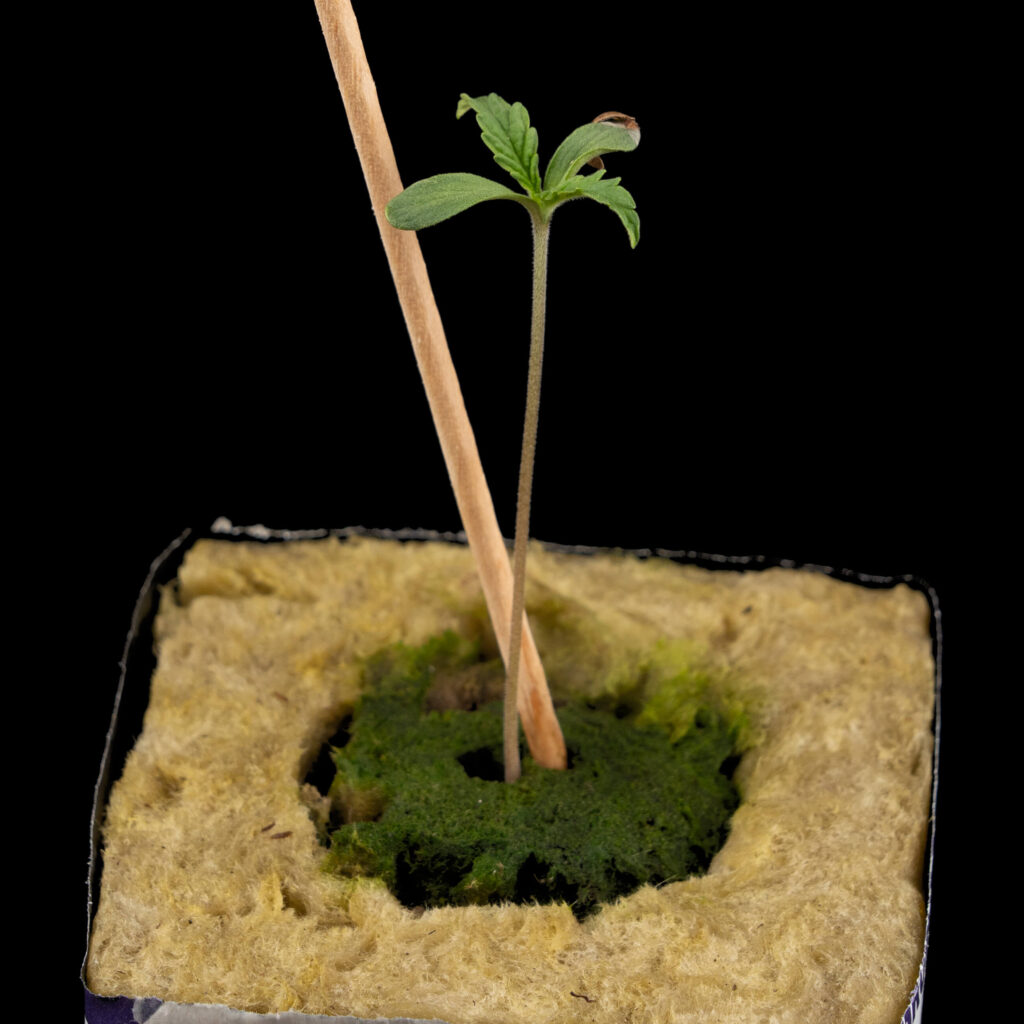
By the end of the first week, our plant was 9 cm tall with some small but healthy cotyledons. After the first feeding, we kept up daily waterings of 100 ml (pH 6.0; EC 1.4) mixed with Bio Grow liquid nutrients. By the end of the week, there were roots growing out of the Rockwool cube, and it was time to move our plant to its new 8-litre plastic pot under our 1000 W lamp.
Vegetation
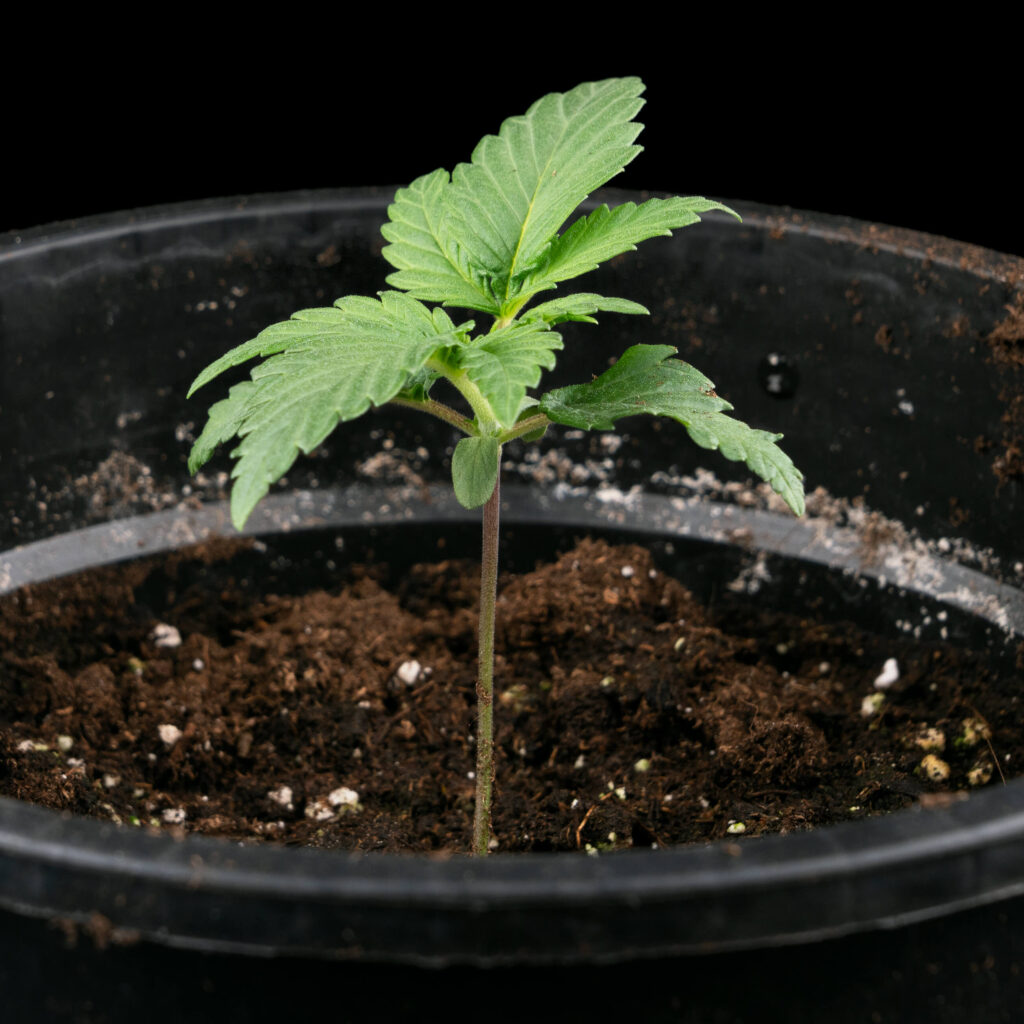
Week two saw our plant nearly double in height to 16 cm and develop its first set of somewhat small, but vibrantly green true leaves. With more rapid growth expected in the coming week, we doubled the amount of water each day to 200 ml.
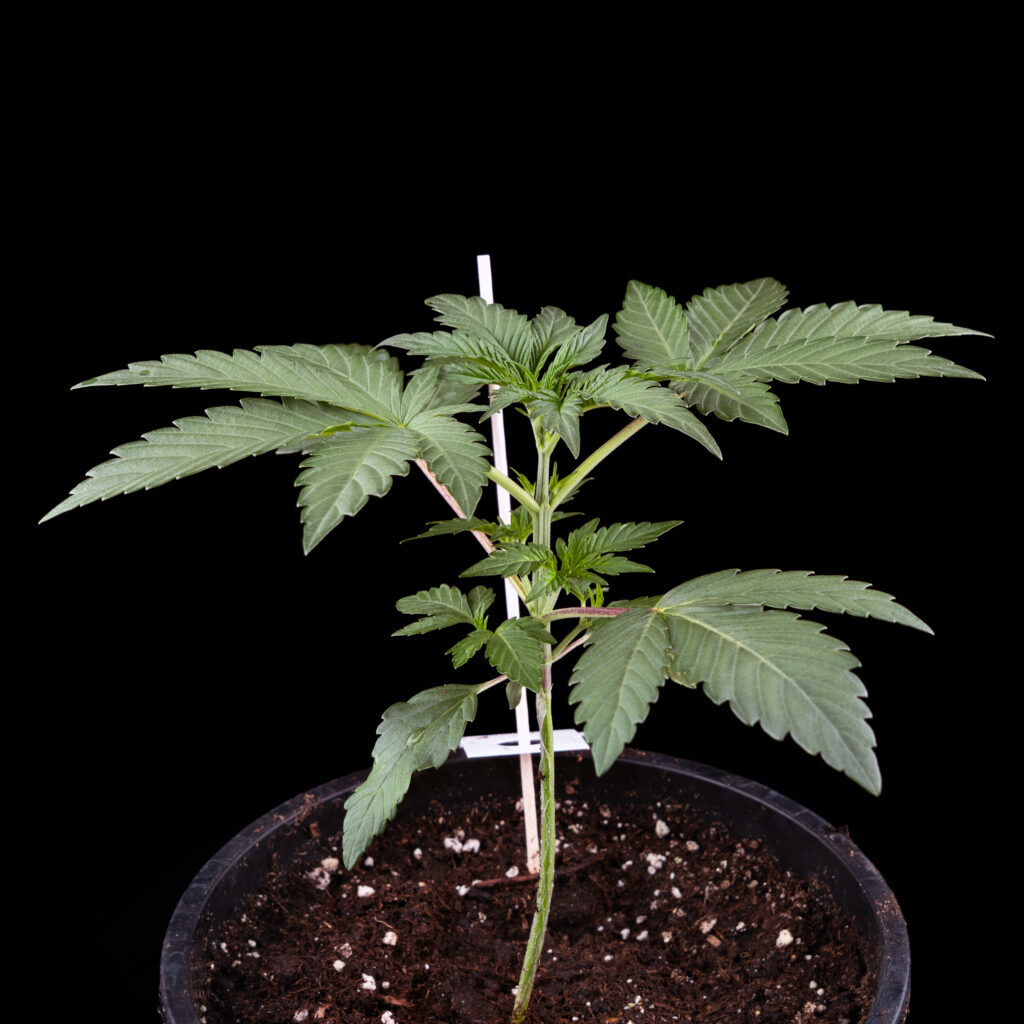
In week three, our plant continued its steady growth, reaching a new height of 23 cm. This week also delivered the first signs of lateral branches growing out from the main stem, along with multiple new sets of leaves. At this point, the internodal spacing was fairly average, if not a little tight, and the plant was fairly lanky with sparse vegetation. With flowering only a week away, we once again doubled the volume of water to 400 ml per day.
As a final precaution before switching our plant to flowering, we hung small satchels of Neoseiulus californicus and Amblyseius swirskii off of the plant’s lower branches. These beneficial bugs have a symbiotic relationship with cannabis, so they don’t harm the plant at all. Instead, they hunt down pests like thrips and spider mites before they can destroy your garden. These are replaced every four weeks to ensure a fresh supply.
Flowering
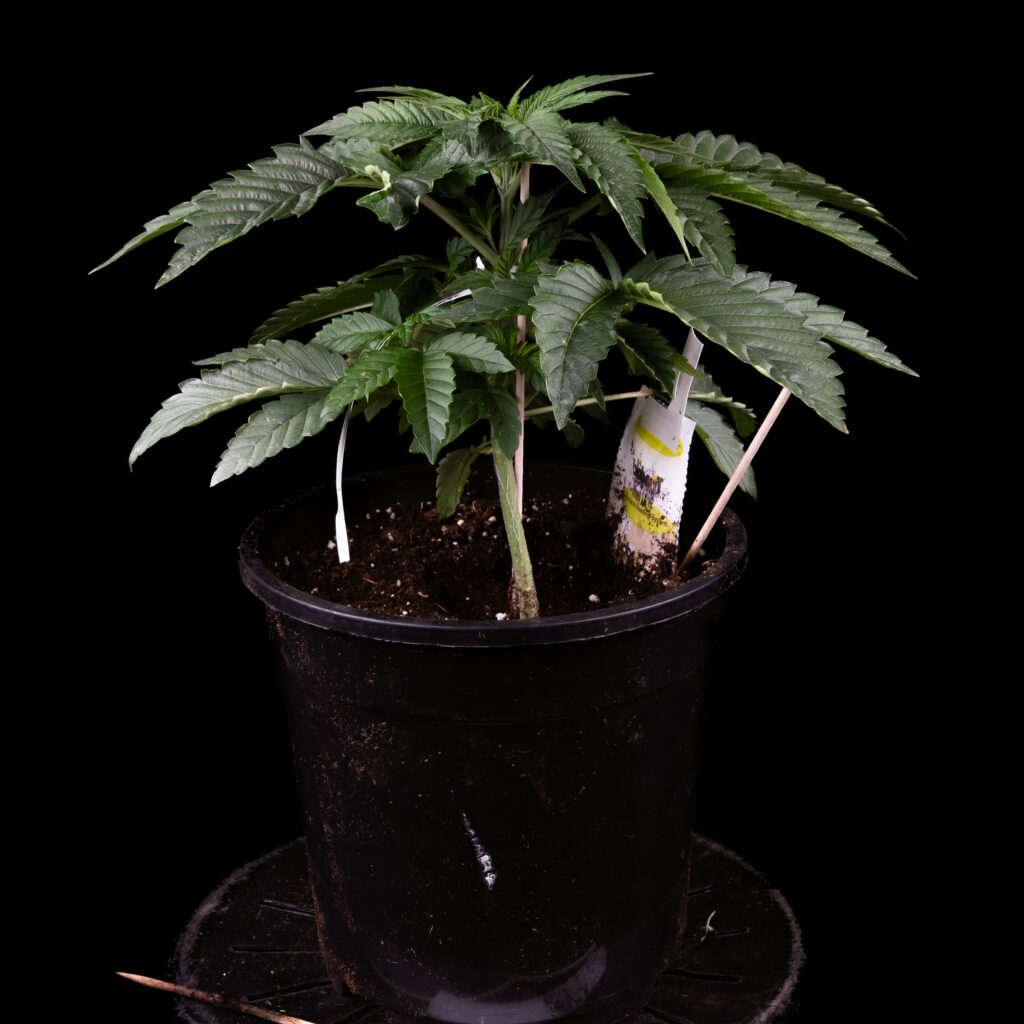
As we moved into week four, it was time to switch our plant to flowering by flipping the lights to a 12/12 schedule, lowering the relative humidity to 60%, and adjusting our feeding habits. At this stage, we started daily feedings with 800 ml of water (pH 6.0; EC 1.8) mixed with Bio Flower liquid nutrients. By the end of the week, our plant was 32 cm tall with a thick main stem, dense vegetation, and fully formed lateral branches.


In week five, our B-Funk Feminized plant saw more rapid growth as it grew to 40 cm and began to stretch considerably. During vegetation, this looked a lot more like an indica, but as soon as we entered flowering, the sativa genetics kicked into action. While it was still quite bushy, internodal spacing was stretching, and lateral branches were growing comparatively slowly. With the plant set to begin flowering any day now, we increased our daily watering to 1000 ml.
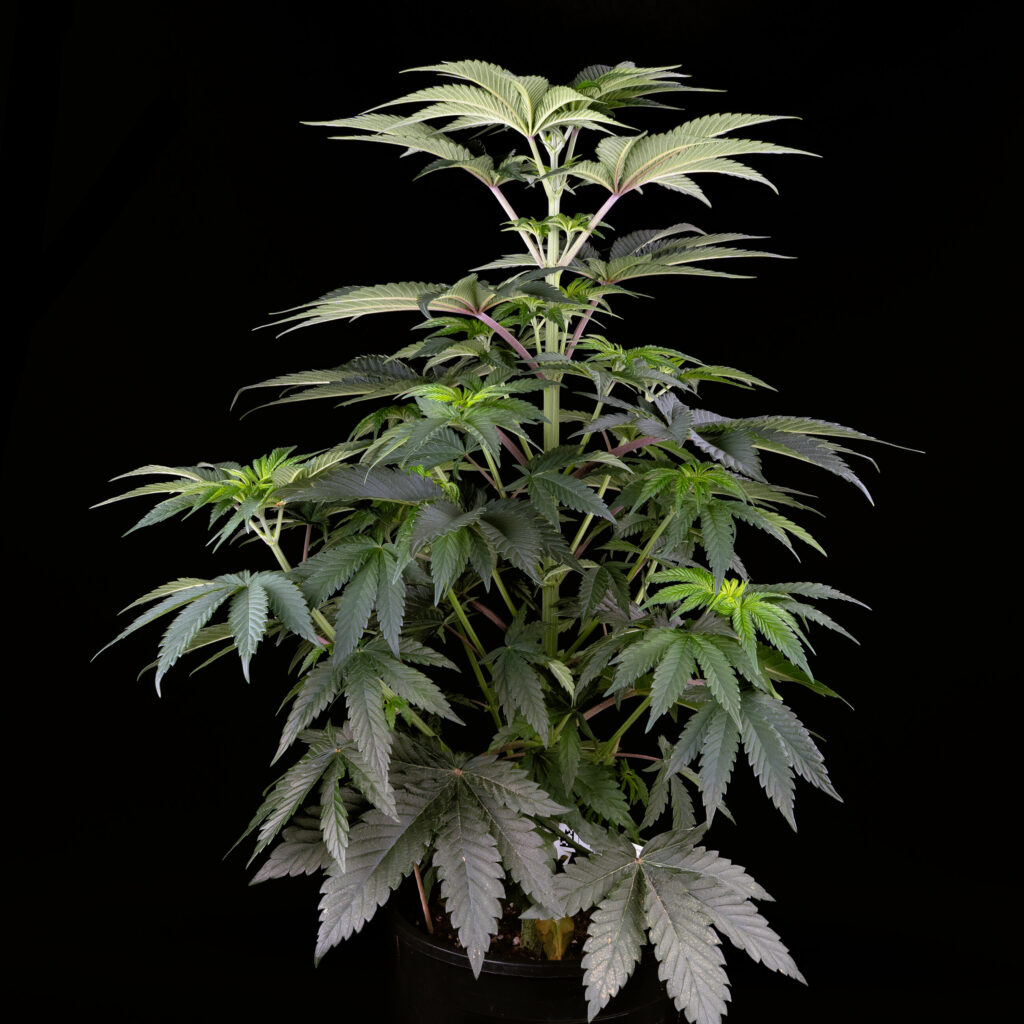
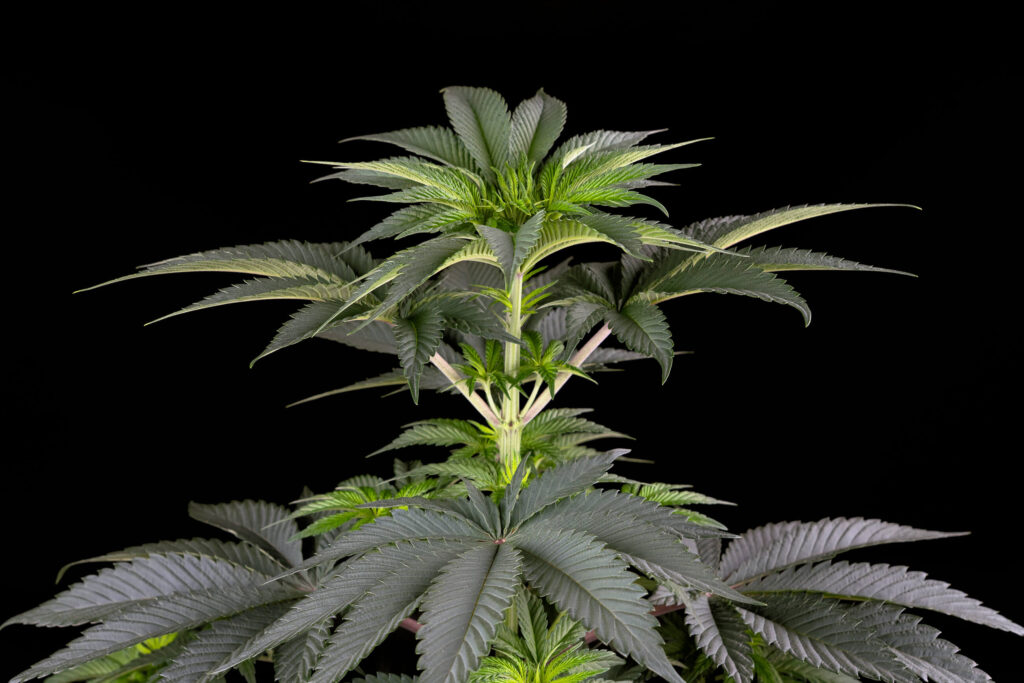
Week six saw our plant shift into high gear as it shot upwards 14 cm to a new height of 54 cm. The internodal spacing was continuing to expand, and the lateral branches were also showing rapid growth, giving the plant a very cylindrical shape. Expecting flowering to begin any day now, we upped the water to 1500 ml per day; this wouldn’t change for the rest of the grow.
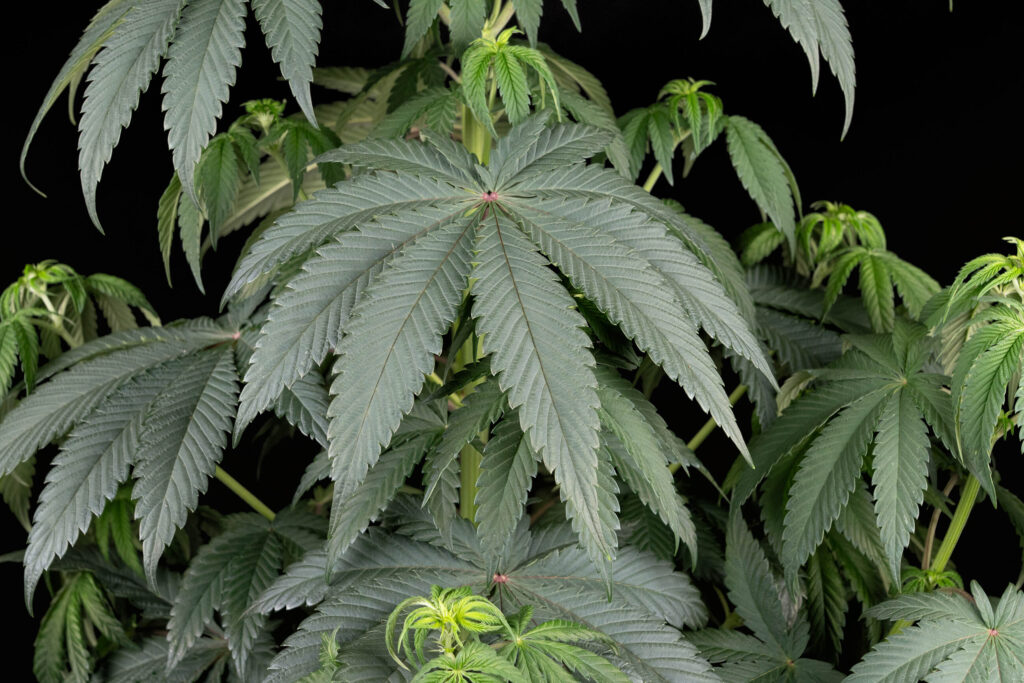
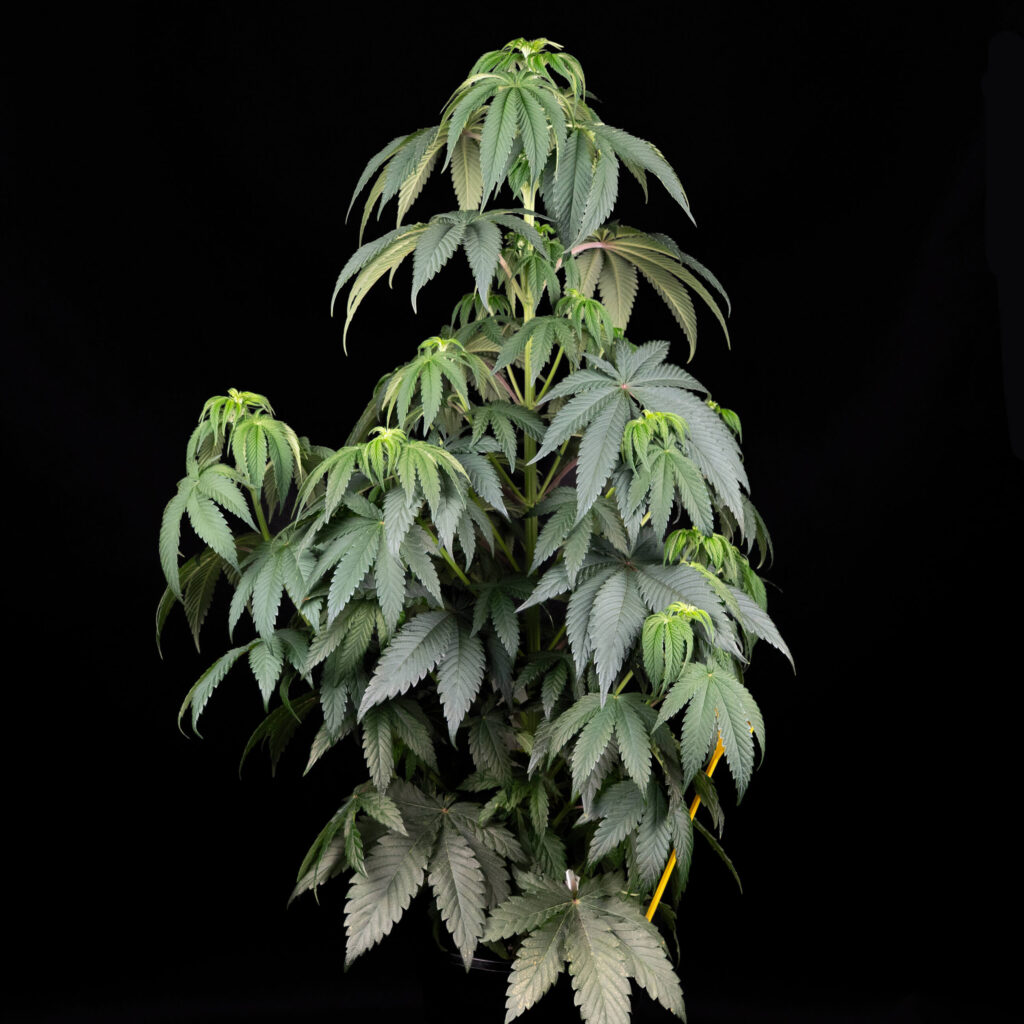
It seems that we may have jumped the gun, as week seven saw our plant drooping considerably from overwatering. These images make things look worse than they were, and despite the overwatering, our plant still skyrocketed 18 cm to a new finish the week standing 72 cm tall. The internodal spacing was still stretching, and the lateral branches were developing nicely. We still weren’t seeing any signs of flowering, but that’s not uncommon for sativas.
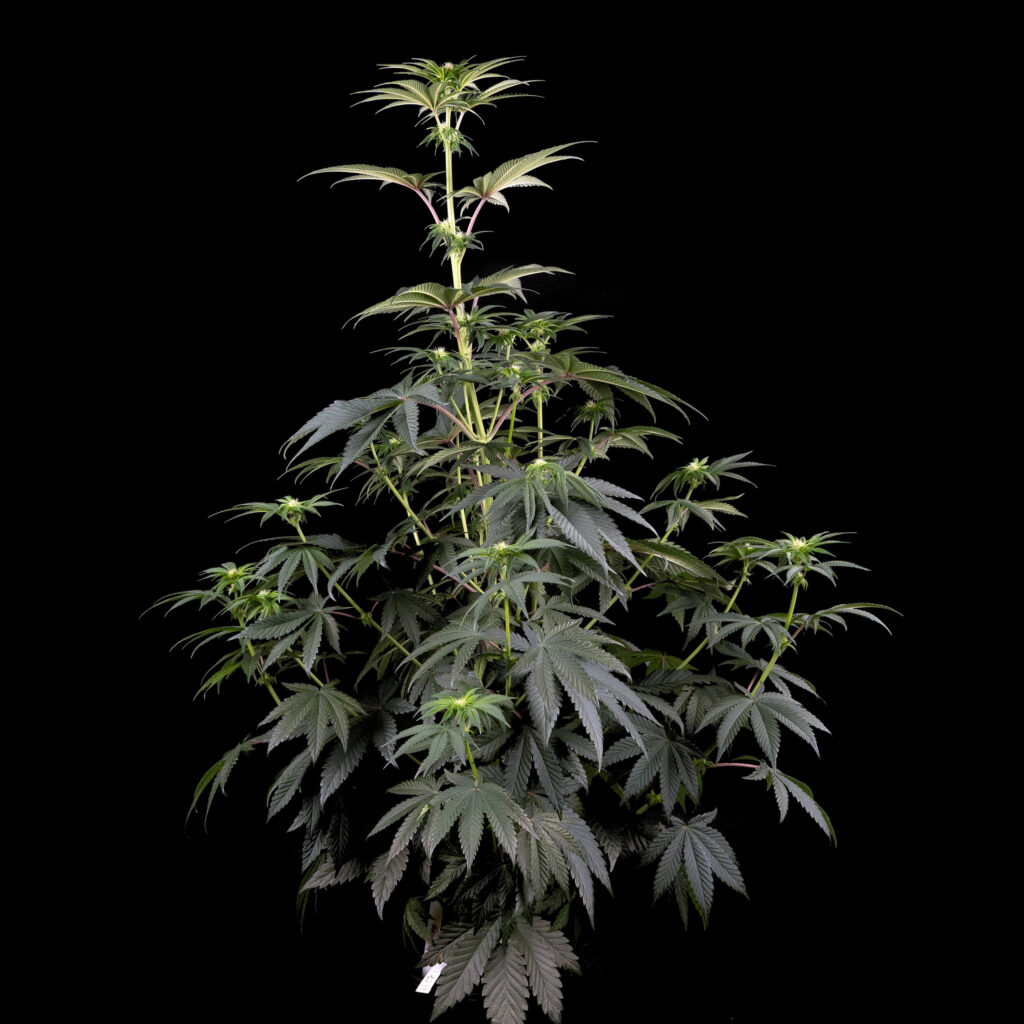
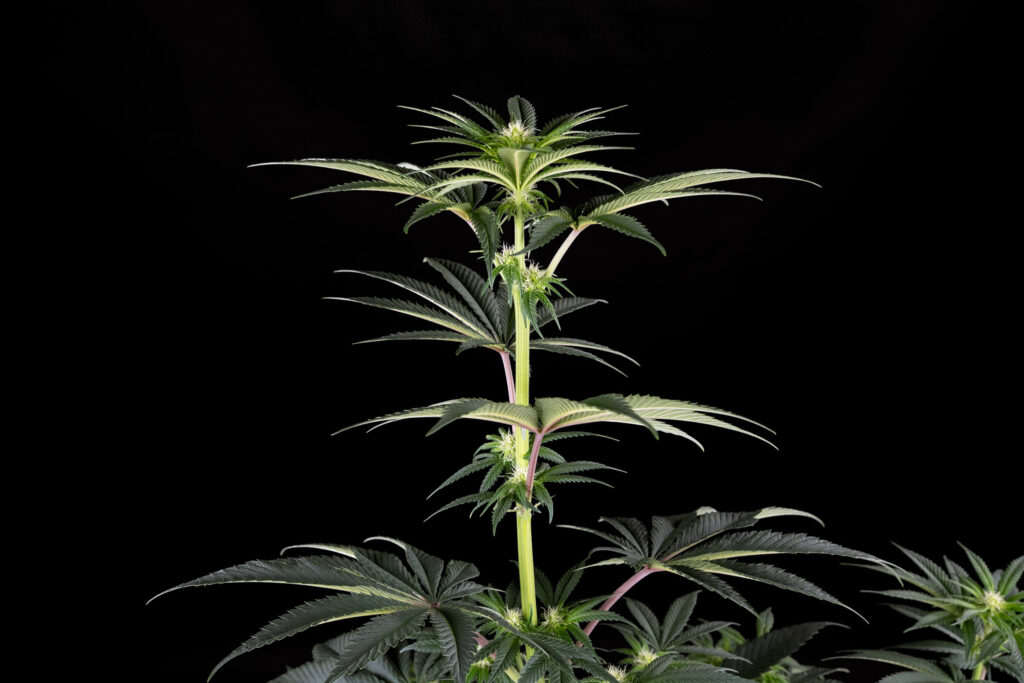
In week eight, our B-Funk Feminized plant saw the largest week-on-week growth of the entire process, gaining 23 cm to stand at an impressive 95 cm tall. By now, the internodal spacing could only be described as “extreme”, with the main stalk standing more than twice the height of the lower canopy. The lateral branches were long and slender, though surprisingly sturdy and by the end of the week, small clusters of white pistils were appearing at each flowering site.


In week nine, things came to a grinding halt as our plant grew only 5 cm to 101 cm. This was by no means a bad thing, as it meant that the plant was putting all of its energy into flower development. Over the week, the buds began to grow larger at each flowering site.
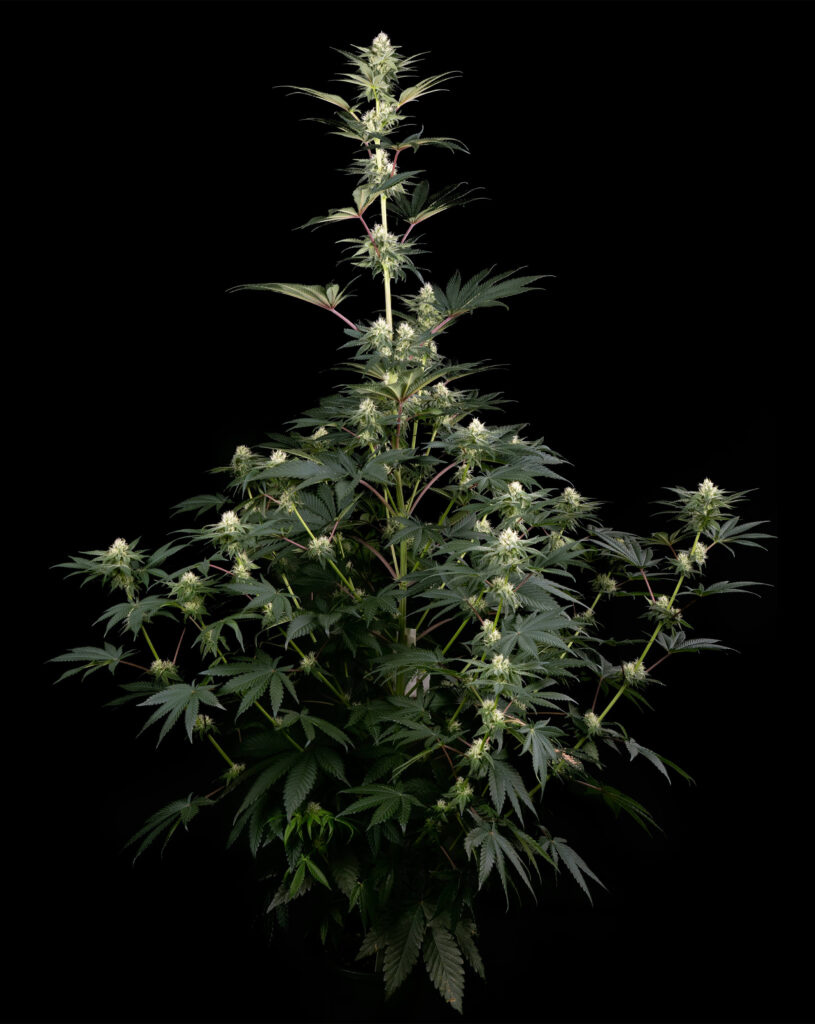
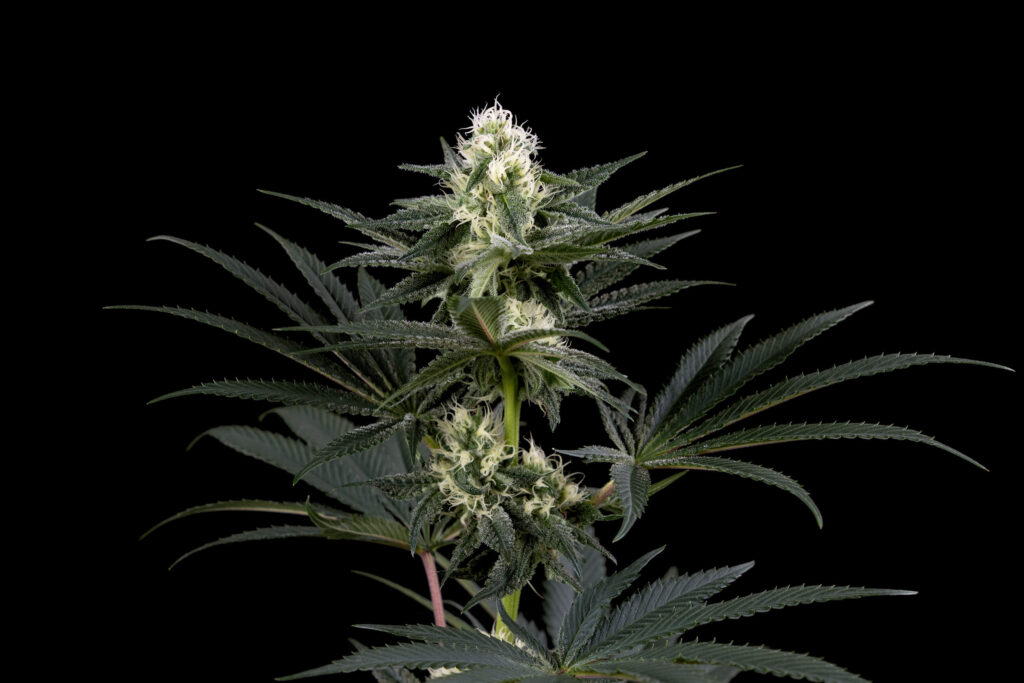
Week ten was more of the same; another 5 cm of growth to put the plant at 106 cm tall. The lateral branches had stopped growing and were now covered in rapidly growing buds. Despite their length, the branches were doing a great job of supporting their weight.
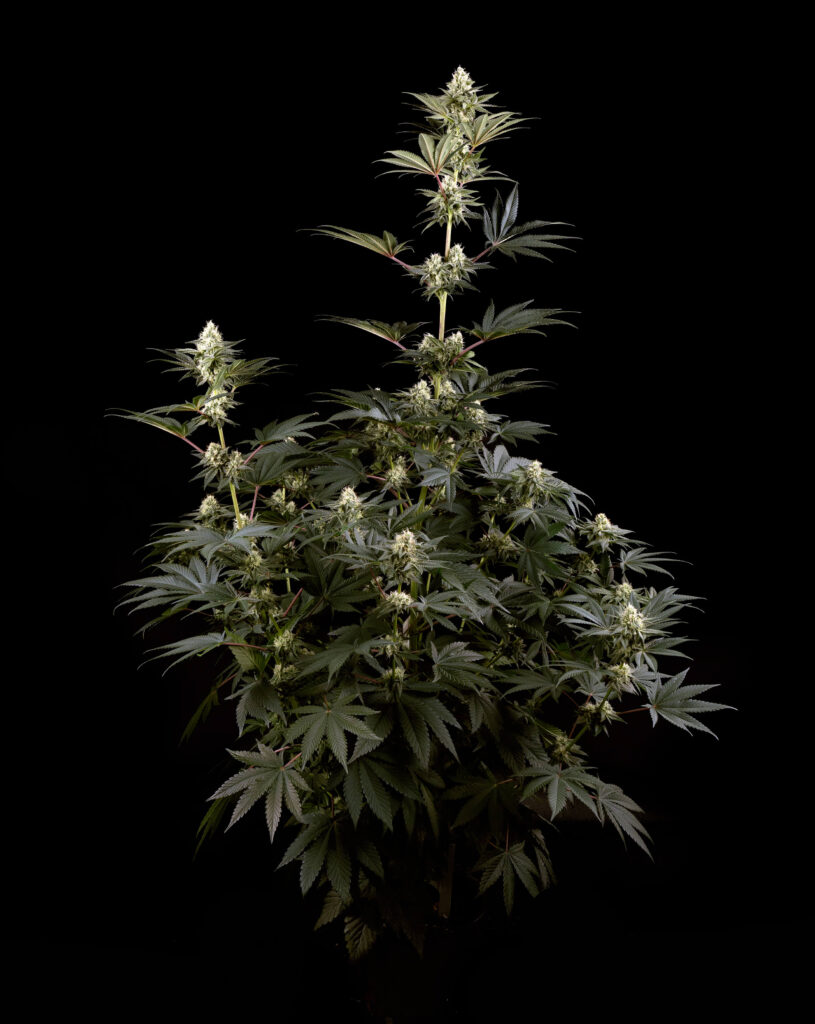

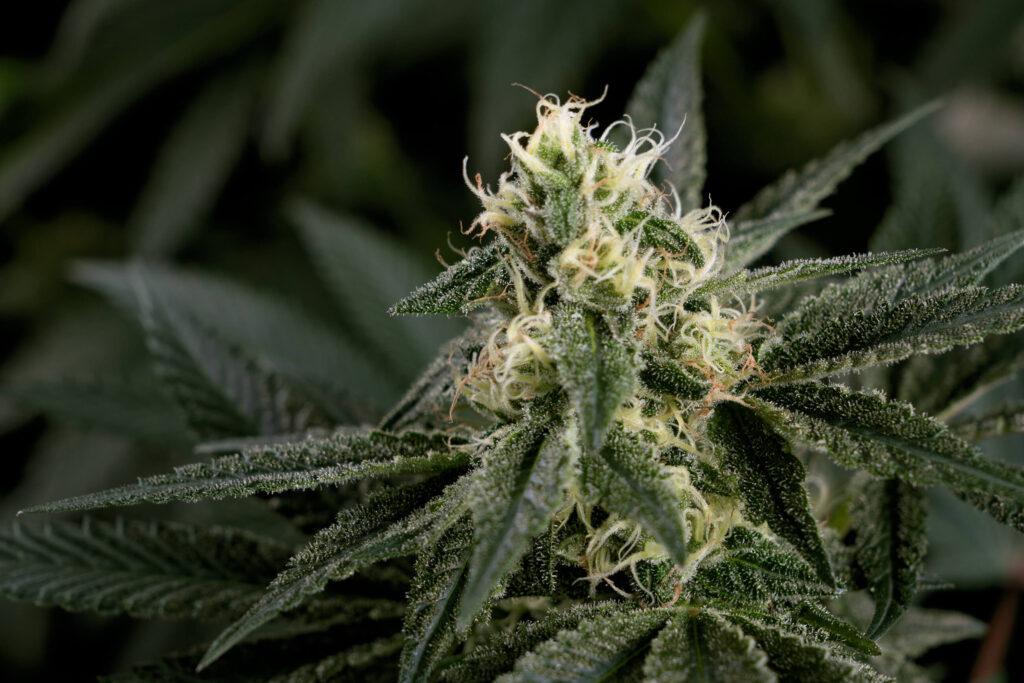


Weeks eleven and twelve saw our plant reach its maximum height of 113 cm: tall, but not too tall for most indoor grow spaces. The buds grew larger and denser with each passing day, and while the main cola wasn’t overly large, the flowers on the main stem were seriously impressive in their own right. Over these weeks, the white pistils quickly turned to a fiery, pale orange, showing that harvest was nearly at hand.
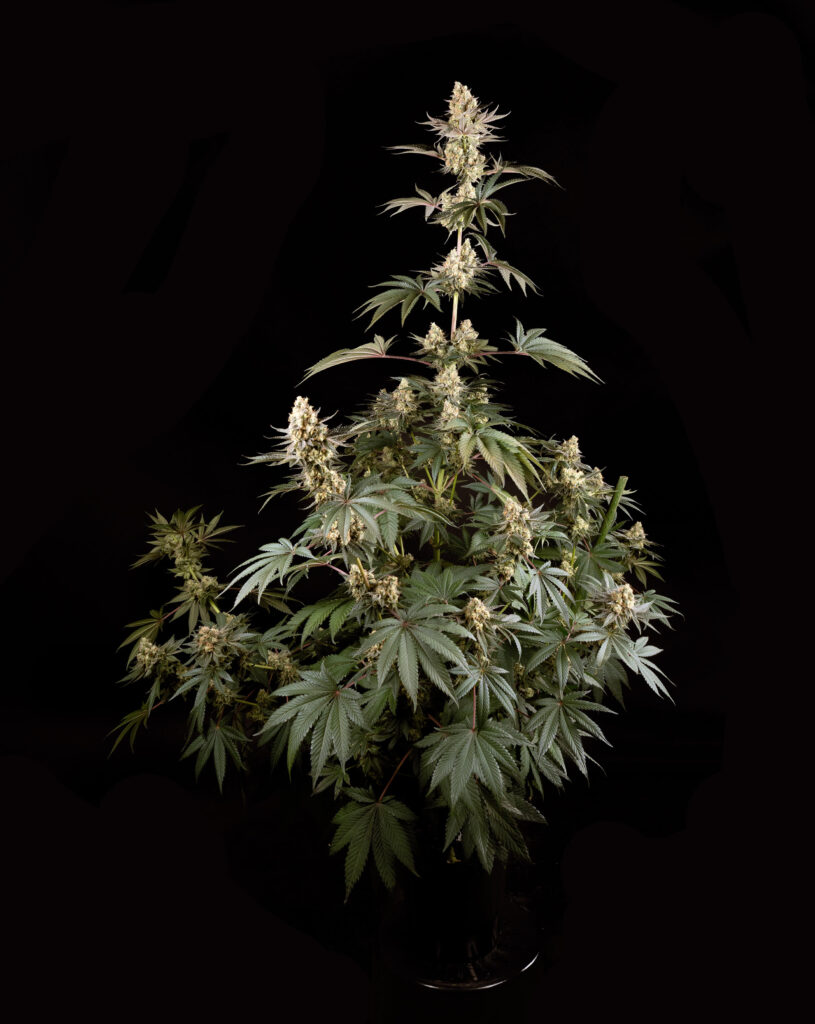


Finally, in week thirteen, we harvested our B-Funk Feminized cannabis plant.
Harvest
As soon as it was ready, we moved to harvest our B-Funk Feminized cannabis plant. First, we cut it down at the base, removed all of the plant’s fan leaves, and left the mostly-trimmed plant hanging upside-down in our drying room, where we maintain a stable temperature of 15.5°C and a relative humidity of 50%. We left the plant hanging like this until the smallest branches were dry enough to snap when bent; usually 10-20 days.
Once dried, we took our plant down, removed the buds, and trimmed off any remaining leaves. These buds weren’t terribly leafy, but there were quite a few of them, and the trimming process for these plants can be quite time-consuming. After we’d finished, we put all of the trimmed flowers into glass jars for curing.
For the first full day, we left the jars open to allow the majority of the remaining moisture to evaporate. After 24 hours, we sealed everything up and set the jars in a cool, dark place. For the next several weeks, these jars were “burped” for an hour at a time. At first, this was done several times a day, but we gradually reduced the frequency to once per day until the buds were ready. On average, curing typically lasts 4-6 weeks and is crucial for creating top-quality flowers.
In the end, our B-Funk Feminized plant produced 137 grams of dried buds with a THC content of 23.2%.
Terpene profile
As our B-Funk Feminized cannabis plant reached maturity, it gave off a fairly mild, sweet aroma with fruity notes of ripe berries blended with tangier tropical citrus. As the plant approached harvest, these scents were joined by more earthy undertones, which complemented the tangier fruity notes to create a rich blend. While the odour was certainly noticeable, it never became overwhelming, and growers should have little trouble concealing the aroma if they desire.
After our buds had been fully dried and cured, the smell grew sharper with notes of fresh berry, tropical mango, and pineapple coming to the forefront. Just behind that, we found a sweet, candy-like fragrance with a slightly tangy cheesiness. The flavour we precisely what we’d expected based on these aromas and was a delicious blend of sweet berries and tropical fruit on the inhale with more berry flavour and a hint of creamy cheese on the exhale.
Overall, B-Funk Feminized was fairly well-balanced with a potent and euphoric cerebral rush that hit us hard and fast, boosting our mood and sparking an intense burst of creativity. This powerful high was almost psychedelic at times, increasing awareness and focus. This initial head high gradually transitioned into a deeply relaxing body stone, calming the manic energy and melting away tension without locking us to the couch. In the end, this strain is ideal for creative endeavours, socialising, or a day of outdoor exploration.
The outcome
B-Funk Feminized was a true joy to grow. Unlike many other sativa-dominant hybrids, B-Funk leans into those genetics and develops into lanky, stretched-out plants, which are still short enough for many indoor growers. If you’re looking for an energising and uplifting sativa, but you’re worried about headroom, B-Funk Feminized is worth a look.
- Disclaimer:Laws and regulations regarding cannabis cultivation differ from country to country. Sensi Seeds therefore strongly advises you to check your local laws and regulations. Do not act in conflict with the law.







